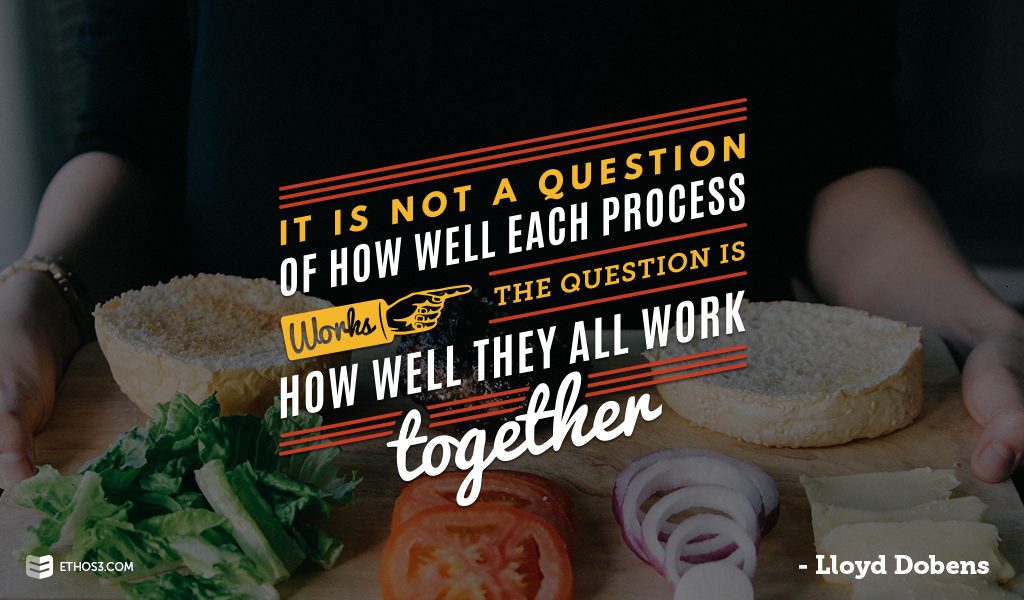Many of our blogs dive into our internal processes to show you how we brainstorm, write, and design great presentations. But there are also elements of the creation process that have nothing to do with what the PowerPoint looks like displayed on a projector. These are aspects outside of design and content work that have to do with the skills your team brings to the project before it even begins.
We’ve noticed that for both our internal work and client work, the strongest projects are a result of strong teamwork. At all stages of a presentation, a cohesive team with a shared goal will always beat a team where division and discord are king. Without mutual agreement, even the size of a presentation’s font becomes a hill worth dying on.
From experience, our best advice to companies who need to create a new presentation is to shrink the amount of people who work on the project itself. Often times, the presentation is shown to people on the team who will not be delivering the deck. Their feedback comes from a very different place than that of the speaker. Too much feedback, too many personal opinions, and not enough cohesion can turn a simple 10 slide presentation into 100 painful slides of discord.
Where do you start?
We recommend that you only gather the individual(s) who will be delivering the deck and those who will be writing or designing it. Don’t worry about brand messaging, brand design, or aligning your work with your core principles at this stage. The only thing that matters is that the presenter has the right tool for the job. Decisions about whether or not to have a logo on each slide are secondary.
Also be wary of who you share the unfinished deck with, especially for the sake of feedback. Everyone brings to the table their own perspective and history. Some people hate photos, some hate the color red, and some need a paragraph of text on each slide. The only decisions that matter are objective decisions. It will be much easier to separate personal opinion from objective feedback when you have a smaller amount of feedback to wade through.
Consider the hat…
Think of a presentation as a hat. The presenter needs to wear this special hat in order to represent your company and deliver an important speech. It is both a visual representation of your message as well as something that gives insight into the presenter. Every time someone adds a feather, removes a seam, stitches a patch, or paints a slogan, the hat becomes a clear indicator that too many hands have touched the original design. It’s no longer practical; it’s just a mess.

Questions to help narrow the field
A smaller team can speed up internal process, cut back on debate, and hone in on what really matters. The closer the team is to the actual speaking event, the more valuable their feedback will be. As you work to edit down your team size, ask the following questions:
Who will be designing and writing the presentation?
Who will be using the presentation in the future?
Will the presentation be used for any other purposes down the line?
Does the presentation need to comply with brand standards?
Once you’ve narrowed down your presentation team to only include the people in direct contact with the content, you’re ready to start. We think you’ll find that your process is much quicker, and overall confusion is much more diminished moving forward.
Want to read more behind the scenes blogs about creating a presentation? Check out the related articles below:
Inside Ethos3: Using Content Pitches to Develop a Strong Storyboard
